The Rough Trek: The Journey of ISO 9001 and Quality Management
- By PP Perera
- May 05, 2021

As far as Quality Management System (QMS) certification is concerned, my first exposure was to ISO 9000: 1994, about seven years after the first ISO 9000 standard emerged from the former BS 5750. The 20 + auditable QMS requirements has resulted in a bewildering and voluminous mass of documentations. It was virtually a system of documents, contrary to a documented system. According to the standard, the company was expected to establish, implement and maintain a documented procedure for all the auditable requirements of the standard. It was a period when the standard was spreading like bush fire, creating a gold mine for Consultants who thrived on the ignorance of the client companies. Preparation and maintenance of the documentation alone, engaged considerable managerial time, and hence the tendency to consider ISO 9000 based QMs as an area separate from the Quality Assurance and other operational functions which has still continued to the present day. This created some dichotomy between the ISO Department and the other functional sections resulting in conflicts. On doing the QMS audits, as an independent auditor for many companies, I have the experience of being confronted with a cart-load of files and documents. This was of course before, the soft copy methodology firmly got established. Many of the External Auditors, spent considerable time, in checking Document and Records, in scrutinizing document reference and revision numbers of even the less significant documents and formats, rather than concentration on the more important requirements. In this respect, I have a great respect for one of the very senior officers of the Sri Lanka Standards Institution, whose approach was to study the operational relationships and their effectiveness.
The transition in to ISO 9001:2000 saw some very significant and far-reaching changes, which the industries, took about one to two years to fully realize. It was a challenge for the auditors and the Certification bodies as well. A careful scrutiny of the eight principles of quality management, will show that they are nothing else but common business sense. The eight principles are:
- Customer focus
- Leadership
- Involvement of people
- Process approach
- Systems approach to management
- Continual improvement
- Factual approach to decision making
- Mutually beneficial supplier relations.

A casual glance at the principles, will reveal that it is about common sense of good managerial practices., irrespective of whether one goes for certification or not. However, it was an uphill task to grapple these concepts and integrate them holistically in to the quality management systems. Process approach in very simple terms means how to relate the inputs to outputs through the value adding conversions and how to control the activities, realize the desired results. It is directly related to the traditional definition of productivity, namely the ratio of out puts to inputs. What was difficult to comprehend was the fact that, the other seven quality management principles also provide inputs for the process approach. As an example, the auditors found it a grey area when it comes to evaluating leadership, in the context of the process approach. Regarding the establishment of the Quality Policy, which in turn is a requirement under leadership, I have seen many quality polices with attractive wordings which more often serve as show pieces. Very few companies have used the quality policy to provide direction for the setting up of quality objectives. One of the meaningful but concise quality policies I have seen is “We do everything, correctly, right first time at all times’’.
While the 2008 version of the ISO 9001 standard consisted of some notional changes only, the 2015 version signified a complete change of the concept of quality stressing the importance of quality in business strategy, by considering the impacts of external and internal factors and the expectations of internal and external parties on quality and including risk management as an important aspect of quality. Although the prime focus on ISO is product or service quality, companies cannot ignore the impact on quality, which covers product quality (Q), Price (P), and Delivery (D). The recent impacts of Covid-19 pandemic on the above aspect of quality, was amply seen throughout the world. The above requirements under the Organization Context, is a move in the right direction, in integrating quality in to all aspects of the business. However, most companies and even auditors, consider this in isolation as another requirement of the ISO 9001, which need minimum compliance. Similar comments can have made on the Identification of the risks and opportunities of the operational processes.
Product and service quality is used by most companies as means of maximizing the profit. The Nobel Prize Winner in Economics, Milton Friedman in 1970, stated that the sole responsibility of a business is to “use its resources to increase its profits. As a result of the rapid growth in consumerism, both locally and globally, business firms operate in a challenging and continually changing business environment. The rapid change is supported by rapidly expanding technology, and particularly of information technology. Dynamic organizations are making serious efforts to keep abreast of developments, in the changing business environment, while many traditional and conservative organizations are failing. Change has become inevitable.”
While we cannot find any fault with this approach, one cannot overlook the Social and Environmental bottom lines, which together with the Economic bottom-line, constitute the Triple Bottom of Sustainable development. The role of quality management on the social and environmental bottom lines, is a concept that has great potential in the modern-day concept. The reduction of scarp and rejects, especially in the tyre industry, will improve the environmental performance, while reducing the health and fire risks, often caused by irresponsible dumping.
Internal and external communications under the requirement 7.0, Support of the ISO 9001 and 14001:2015 standards are another area where adequate attention has been given. Despite the great advances in ICT, we can trace miscommunications as the root cause of most of the Non- conformance report raised during the QMS audits.
John Ruskin, the English author, (1819 -1900 ) once said, “ Quality is never an accident. It is always the result of intelligence effort.” I have seen this famous quote adorning the walls in some offices of CEOs and Senior Managers. However, the perennially repeating non-conformances related to quality in a large number of companies, make me to wonder whether the management and the mangers, “walk the talk.” Companies have in their procession, a handy tool, in the disguise of ISO 9001:2015, to enable them to establish the standard procedures, (SOPs), operate them and control, but many consider it as something to worry about only during the external audits of the certification bodies.
In this respect, it is worthy of mentioning that, in my country Sri Lanka, there is a famous Buddhist Cultural Pageant, in August every year, that attracts locals as well large numbers of tourists from across the globe. For the past 400+ years, this event follows the SOPs, without any, awareness of the ISO 9000, emphasizing that there is no magic or mystery about ISO, but the prevalence of good common sense. (TT)
Vredestein Quatrac Pro+ Wins Top Spanish All-Season Tyre Award
- By TT News
- December 31, 2025
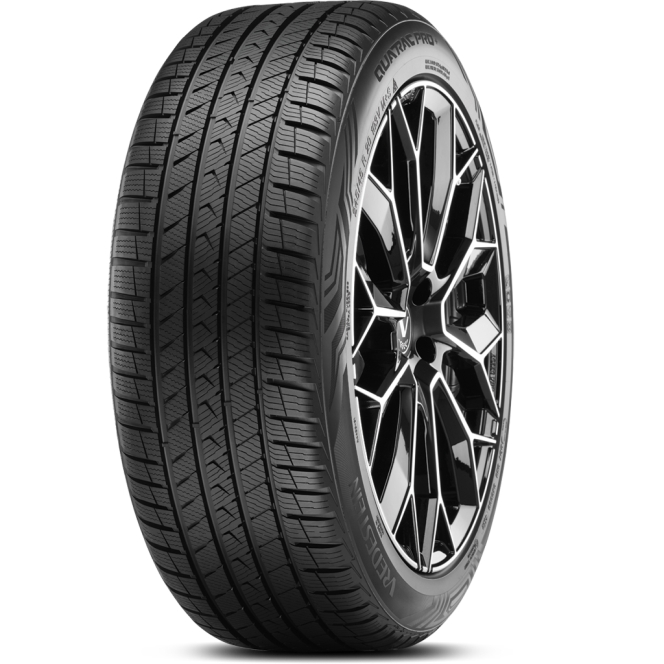
The Vredestein Quatrac Pro+ has been named ‘All Season Tyre of the Year’ at Spain’s prestigious industry awards organised by Neumáticos y Mecánica Rápida magazine and Posventa.com. This premium tyre, manufactured in Europe by Apollo Tyres Ltd, prevailed in a competitive field by excelling in critical areas such as safety, technological innovation and everyday usability, as determined by both an independent expert jury and reader votes.
The tyre earned this honour by delivering exceptional, versatile performance across diverse conditions, providing reliable safety and control on dry roads, in wet weather and through light snow. It also achieves high marks for driving comfort and efficiency. Developed to meet the needs of passenger cars and high-performance SUVs, the Quatrac Pro+ responds to the growing consumer demand for a single, year-round tyre solution that does not compromise on capability or driver confidence.
This award solidifies Vredestein’s position as a leading and innovative reference brand within the all-season tyre market. The official award ceremony is scheduled for February during the annual Tyre of the Year event, which will convene prominent representatives from across Spain’s tyre, automotive and aftermarket industries to celebrate the year’s top products.
Yves Pouliquen, Vice President, Commercial EMEA, Apollo Tyres Ltd, said, “This award is a strong endorsement of our commitment to delivering premium, high-performance all-season tyres tailored to the needs of European drivers. The Quatrac Pro+ encapsulates Vredestein’s longstanding expertise in all-season technology, combining safety, comfort and innovation.”
- INDIAN TYRE INDUSTRY
- TYRE RETREADING
- BIS STANDARDS
- IS 15704
- ECE R109
- CIRCULAR ECONOMY
- MSME CHALLENGES
- AUTOMOTIVE REGULATION
- CARBON REDUCTION
- FREIGHT
- LOGISTICS
Retreading Hangs In Balance Over Regulatory Conundrum
- By Gaurav Nandi
- December 30, 2025
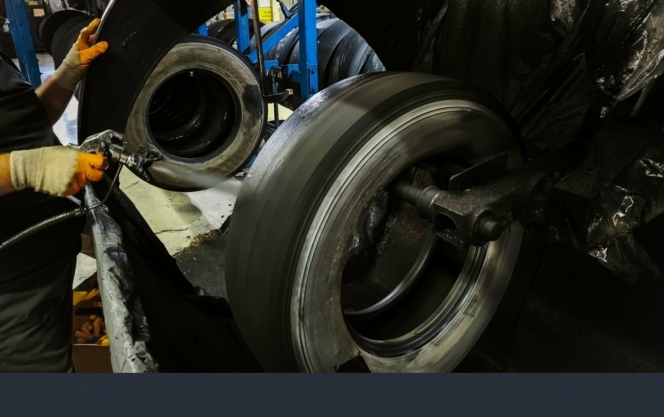
A population of over 1.4 billion people catapulting into the world’s third largest automobile market with four million trucks plying across a road network of 6.3 million kilometres supported by a USD 13.4 billion tyre market and a mining sector contributing around 2–2.5 percent of the country’s GDP demonstrate the strength of India’s automobile, freight and tyre sectors.
The story doesn’t end there as the Central Government adopts a strategic approach on reducing carbon emissions across these verticals, especially automobile and tyres, with targets such as the Net Zero Carbon Emissions by 2070, battery electric vehicles target by 2030, zero-emission truck corridors, Extended Producer Responsibility for the tyre sector; the list just goes on.
Amidst all such statistics and targets, a silent spectator remains the old and varied sector of tyre retreading. In a recent news story reported by Tyre Trends, the Indian Tyre Technical Advisory Committee (ITTAC) had made a proposal to Tyre Retreading Education Association (TREA) for mandating certain standards that will improve the quality of retreads. ITTAC has made recommendations to the BIS committee. TREA is part of the same committee. ITTAC and TREA are recommending different standards.
These standards included BIS retread standards, namely IS 15725, IS 15753, IS 15524 and IS 9168. The ITTAC had partially aligned Indian requirements with ECE R109, the European regulatory benchmark.
In a reply to the proposal, which was accessed by Tyre Trends, TREA urged the Indian Tyre Technical Advisory Committee to seek a deferment or non-applicability of BIS standard IS 15704:2018 for retreaded commercial vehicle tyres, warning that mandatory enforcement could cripple the sector.
In the letter, TREA argued that IS 15704:2018 is largely modelled on new tyre manufacturing norms and is technically unsuitable for retreading, which is a restoration and recycling process.
The standard mandates advanced laboratory tests such as spectrometer-based rubber analysis, endurance testing and compound uniformity checks, requirements that most retreading units, particularly small and medium enterprises, are not equipped to meet
The association highlighted that even large retreaders lack the infrastructure and skilled manpower needed for BIS-grade testing, while the sheer number of retreading units would make inspections and certifications operationally unmanageable for regulators.
TREA warned that compliance costs linked to machinery upgrades, audits and quality control could force 70–80 percent of units to shut down, leading to job losses, higher fleet operating costs and adverse environmental outcomes due to reduced recycling
Instead, TREA proposed that BIS prioritise retreading-specific standards such as IS 13531 and IS 15524, which focus on materials, process control, safety and quality consistency.
The body has also called for a phased transition roadmap, MSME support and industry training before any stricter norms are enforced, stressing that abrupt implementation would undermine the sector’s role in India’s circular economy.
The conundrum
India has a total of 36 administrative divisions comprising 28 states and 8 union territories. The tyre retreading sector has been continuously supporting circularity goals since the early 1970s across the world’s largest economy without getting mainstream recognition.
Even after five decades in service, the industry battles different bottlenecks including fragmentation, manpower shortage, tax pressures brought about by the recent GST revisions and now the implementation of such standards, just to name a few.
The sole practice that can simultaneously reduce carbon emissions from tyres and extend tyre life is assumed the nemesis of an ‘infamous and dangerous practice’ in some states of the country.
However, the industry has been drawing its techniques and quality parameters from the world’s oldest retreading economy, Europe.
“Big retreaders in India already have the necessary processes in place that conform to IS 15524 standards. However, as the standard is not yet mandated, we have voiced support for it because it is process-oriented and outlines how retreading should be carried out, including buffing and building procedures,” said TREA Chairman Karun Sanghi.
He added, “This standard focuses on how the work is done rather than imposing product-level testing that cannot be practically implemented. The current debate on IS 15704 stems from it being fundamentally incompatible. The standard includes requirements such as sidewall marking and destructive testing of retreaded tyres, which are impractical in a retreading environment where each tyre differs in brand, size, application and usage history,” he added.
Destructive testing, he argued, assumes uniform batch sizes. In retreading, where every casing is unique, testing even a single tyre would mean destroying finished products without yielding representative results. Applying such a framework would effectively require the destruction of every tyre in a batch, making compliance unviable.
“We have submitted our response to ITTAC and are awaiting feedback from the committee. We remain open to continued dialogue and will engage further once the committee responds to our submission,” said Sanghi.
According to him, a typical retreader processes about 300 tyres a month across multiple brands including MRF, JK Tyre, Apollo and Michelin and applications ranging from buses and trucks to mining vehicles. These casings vary widely in load cycles, operating conditions and duty patterns, often across several models from the same manufacturer.
The committee has cited European standard ECE R109, but Sanghi points to structural differences: “Europe is a global retreading hub where tyre manufacturers such as Michelin and Bridgestone dominate operations, collect their own tyres, retread them and return them to fleets, making batch-based destructive testing relevant. A similar model exists in US, where large tyre companies lead retreading and largely self-regulate without a single overarching standard. The Indian scenario is different, especially with a fragmented market.”
He stressed that the industry is not opposed to standards but to those that cannot be practically applied, warning that adopting European manufacturing-oriented norms without accounting for India’s market structure and operating realities would be counter-productive.
The debate is no longer about whether standards are needed but whether they are fit for purpose. Without accounting for India’s fragmented retreading ecosystem, enforcing impractical norms could dismantle a circular industry in the name of compliance.
TGL Season 2 Kicks Off With Hankook As Founding And Official Tire Partner
- By TT News
- December 29, 2025
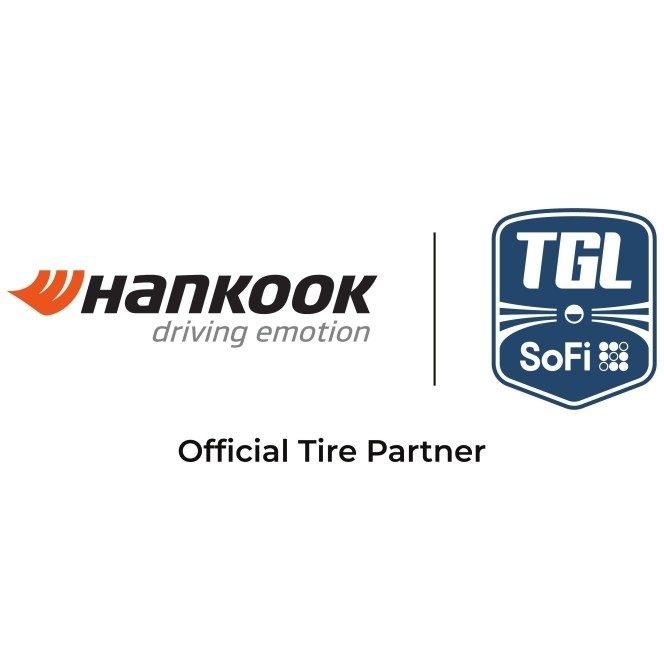
The second season of TGL Presented by SoFi, where Hankook Tire serves as the Founding and Official Tire Partner, commenced on 28 December 2025. This innovative league, a venture of TMRW Sports with backing from icons like Tiger Woods and Rory McIlroy, represents a strategic alignment for Hankook, uniting two entities driven by technological advancement. The partnership provides a global platform to reinforce Hankook's premium brand positioning across North America and worldwide through extensive visibility during broadcasts and at the state-of-the-art SoFi Center in Florida.
This unique venue embodies the league's fusion of sport and technology, featuring a massive simulator with a dedicated ScreenZone and a dynamic GreenZone. This area, equipped with a turntable and over 600 actuators, meticulously replicates real-world golf conditions indoors, creating an immersive arena experience. The competition itself is fast-paced and engaging, with teams of PGA TOUR players competing in Triples and Singles sessions over 15 holes. Innovative elements like the point-doubling ‘Hammer’, real-time strategy via ‘Hot Mic’ and a Shot Clock ensure a dynamic spectacle for fans.
The season opener presented a compelling narrative as a rematch of the inaugural finals, pitting the undefeated Atlanta Drive GC, featuring Justin Thomas and Patrick Cantlay, against a determined New York Golf Club squad led by Matt Fitzpatrick and Xander Schauffele. This match set the tone for an intensive season running through March, where six teams and 24 top golfers will compete. For Hankook, this partnership is more than signage; it is an active engagement with a global community, delivering a distinctive brand experience that bridges cutting-edge mobility and sport for enthusiasts everywhere.
Dunlop Secures CDP ‘A List’ Recognition For Climate Change And Water Security
- By TT News
- December 29, 2025
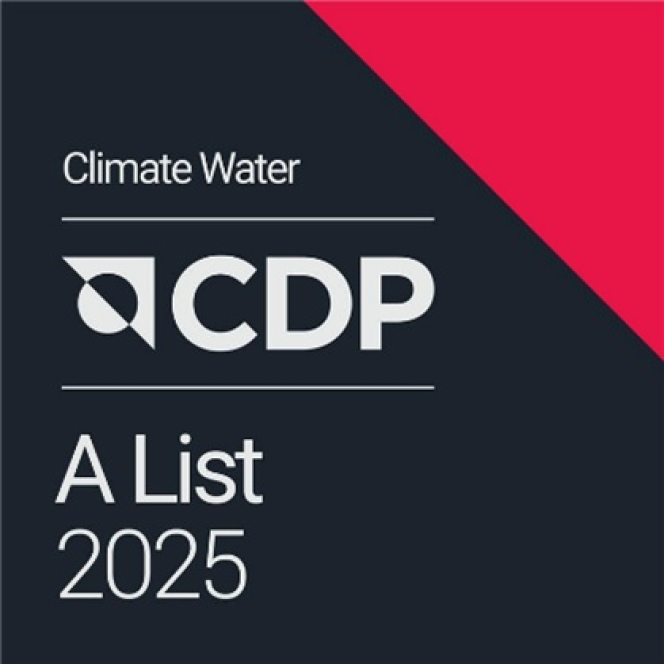
Dunlop (company name: Sumitomo Rubber Industries, Ltd.) has made its way to the annual A-List of CDP for climate change and water security. This premier designation, awarded for the first time to the company in the 2025 evaluation, recognises world-leading performance in transparency, risk management and environmental action. CDP’s annual assessment is a key benchmark for corporate sustainability across climate, water and forests.
This achievement stems from the Group’s integrated approach to material issues outlined in its corporate philosophy. It treats the interconnected challenges of climate change, biodiversity and the circular economy holistically, advancing concrete initiatives under its long-term ‘Driving Our Future’ sustainability policy.
On climate, the Group’s science-based emission reduction targets for 2030 are validated by the Science Based Targets initiative. Operational efforts include pioneering green hydrogen production at its Shirakawa Factory and developing tyres made entirely from sustainable materials by 2050. The company also works to reduce emissions across its supply chain, lowers tyre rolling resistance to improve vehicle fuel economy and extends product life through retreading.
For water security, the strategy is driven by localised risk assessments at global production sites. In seven facilities identified as high-risk, the goal is to achieve 100 percent wastewater recycling by 2050. Progress is already evident, with the company’s Thailand factory reaching full wastewater recycling in 2024.
These coordinated actions on multiple environmental fronts formed the basis for the Group’s simultaneous top-tier recognition in both critical categories from CDP.






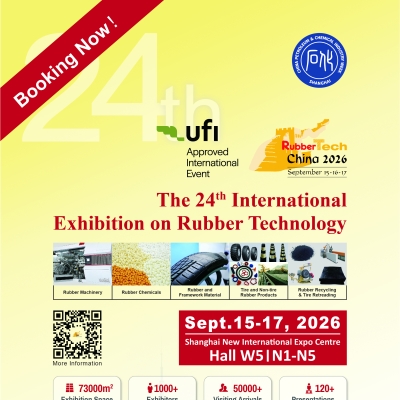
Comments (0)
ADD COMMENT